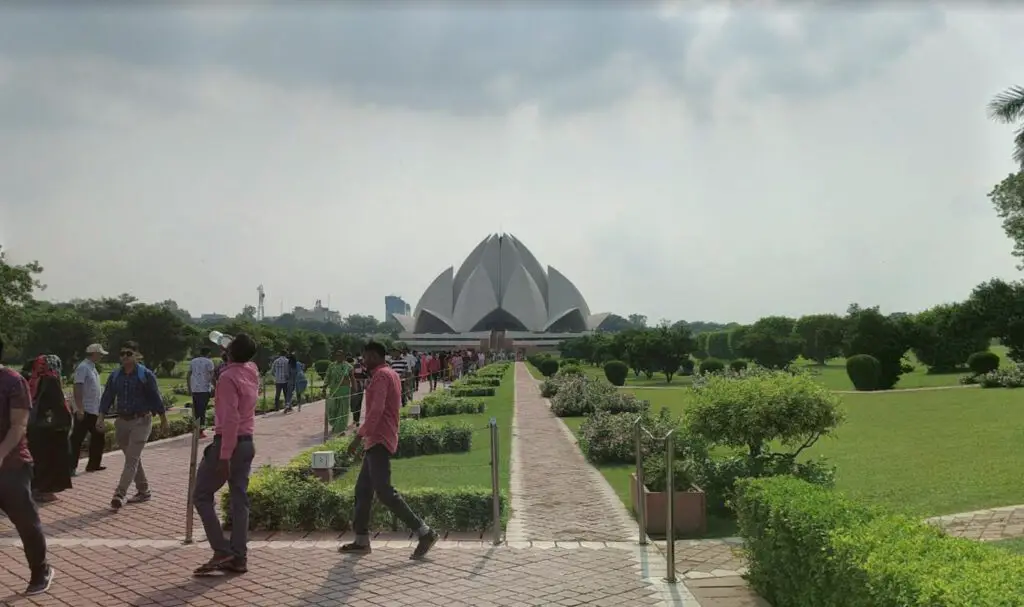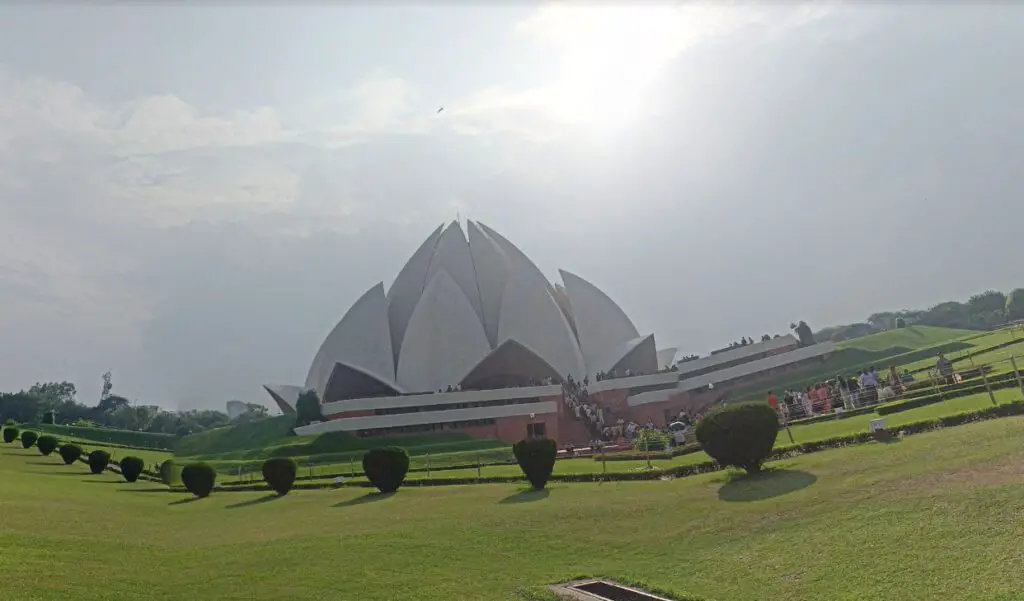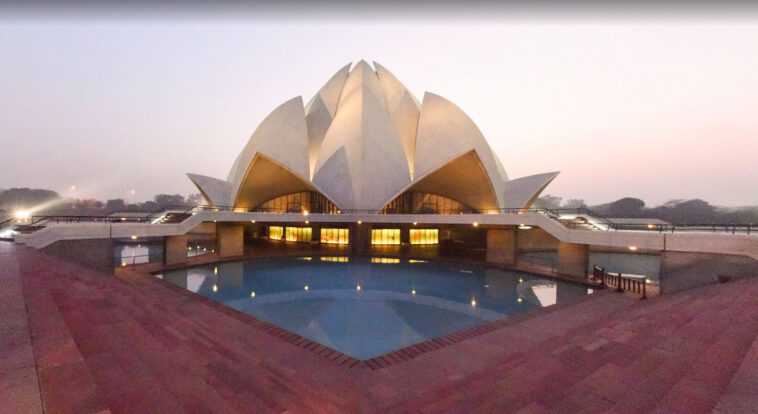The Lotus Temple, an extraordinary feat of modern architecture, resides in the heart of India’s bustling capital, Delhi. This magnificent edifice, nestled amid lush green landscapes, elicits both curiosity and reverence. Its alluring beauty, unique architectural style, and the profound tranquility experienced within its confines make it a must-visit for architecture enthusiasts and peace-seekers alike.
Officially known as the Bahá’í House of Worship, the Lotus Temple was conceived by an acclaimed Iranian architect, Fariborz Sahba. The construction commenced in 1976, and after a meticulous process lasting a decade, the temple opened its doors to the public in 1986. Sahba’s creation is a phenomenal example of Expressionist architecture, marked by its organic form and a harmonious amalgamation of structure, function, and setting.

Resembling a blossoming lotus, the national flower of India, the temple stands out in its striking shape. This symbolic design is a masterstroke, mirroring the tenets of the Bahá’í faith, promoting unity, peace, and the oneness of all religions.
Spanning over a sprawling 26 acres, the temple complex is an impressive site. The lotus structure itself is a towering 34.3 meters in height, comprising 27 free-standing marble-clad “petals” grouped in clusters of three to form nine sides. Nine entrances lead into a central hall, capable of accommodating up to 2,500 people. The temple’s total floor area measures around 105,000m² .
The interior of the Lotus Temple is as awe-inspiring as its exterior. The vast prayer hall, devoid of any religious idols or symbols, is characterized by its purity, simplicity, and serenity. The hall is adorned with a mesmerizing array of light beams, illuminating through the intricate marble petals, creating an ethereal aura conducive to introspection and meditation.

Besides its striking aesthetic appeal, the Lotus Temple embodies exceptional engineering principles. The innovative use of concrete and white marble from the Penteli mountain in Greece, the exact source for the Parthenon, adds both durability and an awe-inspiring brilliance to the structure.
As per its purpose, the Lotus Temple is a universal place of worship, welcoming individuals from all religions and beliefs. This openness to all faiths symbolizes its commitment to the ideals of equality and unity, as underlined in the Bahá’í principles.
Located at Lotus Temple Rd, Bahapur, Shambhu Dayal Bagh, Kalkaji, New Delhi, Delhi 110019, India, the temple is easily accessible from all corners of the city. Please note that due to its religious significance, no photography is allowed inside the main temple.
It’s important to keep in mind that while I can provide some specifics, for the most accurate and updated information regarding opening hours and other details, please refer to the official website or contact them directly.
Although the exact cost of the construction remains undisclosed, it’s fair to say that this masterpiece, built over a decade, is an invaluable contribution to Delhi’s cultural and architectural landscape.
In summary, the Lotus Temple, with its distinctive lotus design, sublime ambiance, and the universal message of unity and peace, holds a special place in the world’s architectural panorama. Its harmonious fusion of design and philosophy invites us to explore not only the marvels of modern architecture but also the depths of human spirituality.
Further Information About The Lotus Temple In Delhi India
Date Construction started: 19 October 1977
Date Opened: December 1986
Architect: Fariborz Sahba
Architectural style: Expressionist architecture
Size or floor area: 26-acre
Height: 34.3 m
Function or purpose: Place of worship
Address: Lotus Temple Rd Bahapur, Kalkaji, New Delhi, Delhi 110019, India
Phone number: +91 11 2644 4029
Opening hours:
Monday Closed
Tuesday 8:30 am–6 pm
Wednesday 8:30 am–6 pm
Thursday 8:30 am–6 pm
Friday 8:30 am–6 pm
Saturday 8:30 am–6 pmSunday 8:30 am–6 pm




